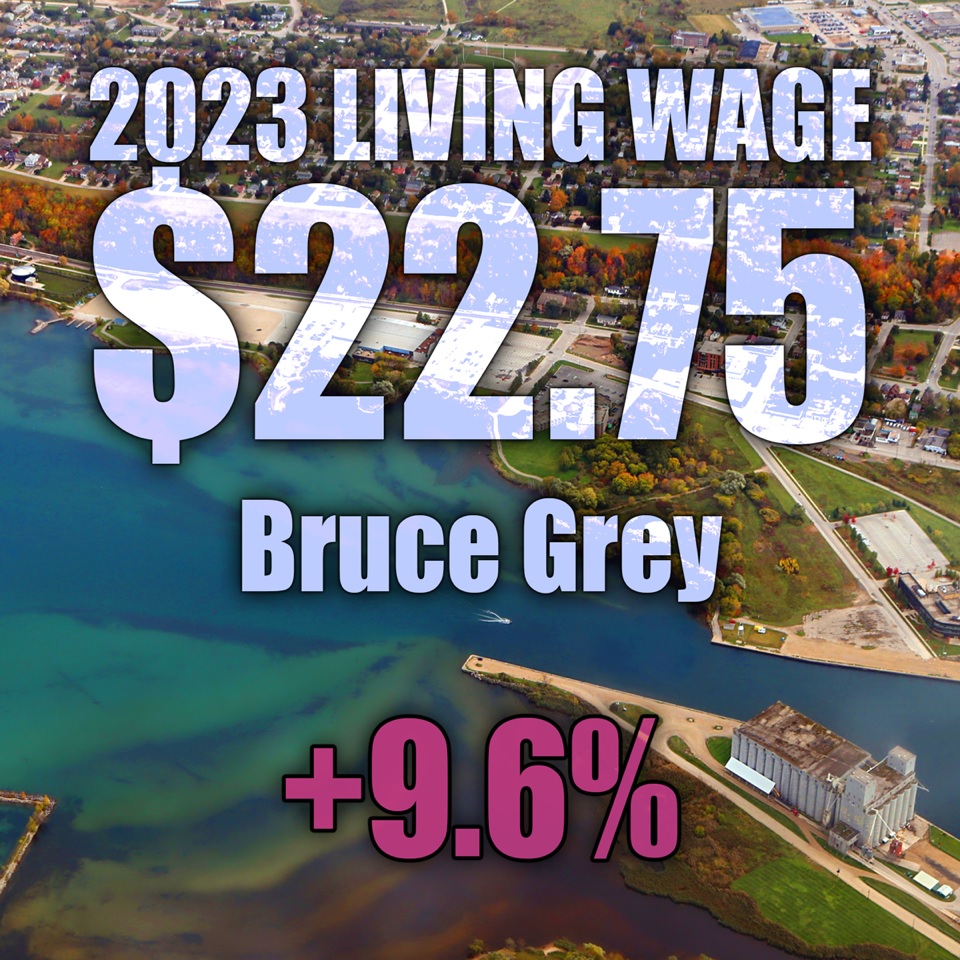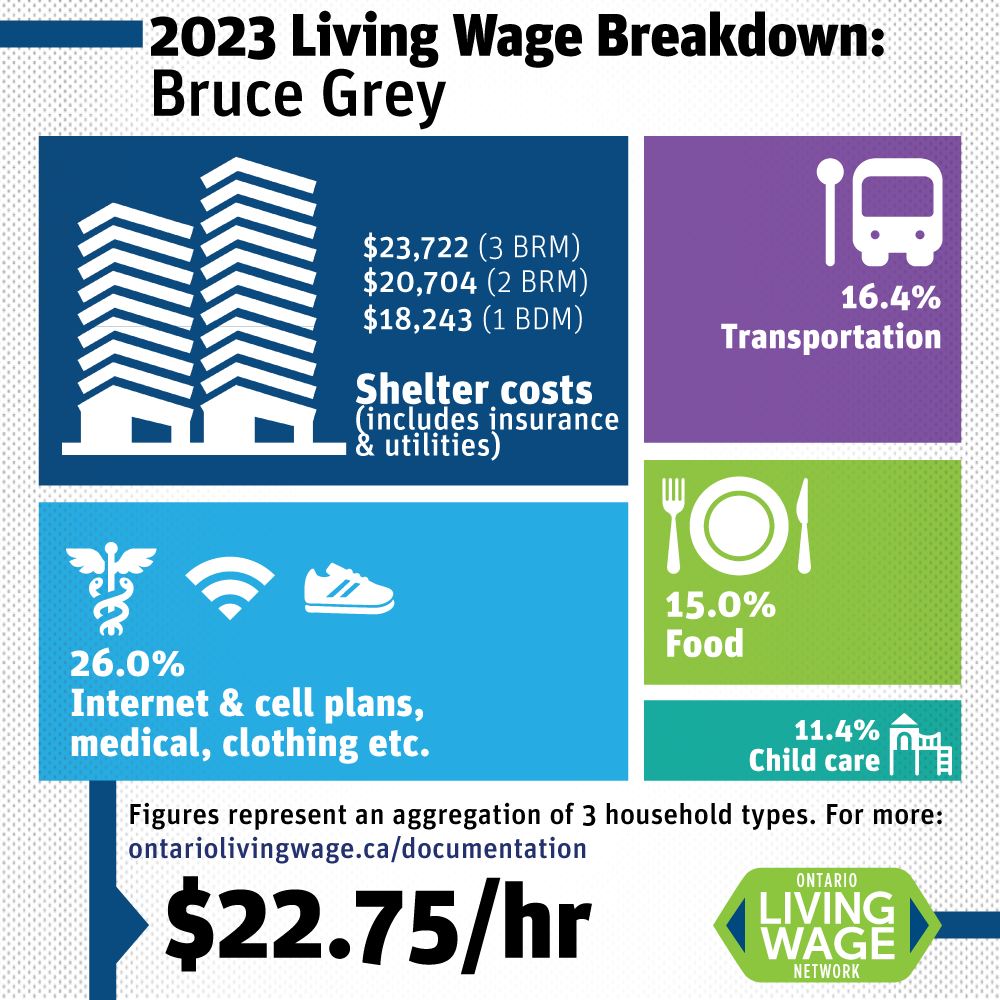2023 Living Wage in Bruce Grey

Bruce Grey’s Living Wage increases by 9.6% for 2023 to $22.75 per hour
Living Wage: The living wage is what a worker needs to earn, per hour, at 40 hours per week, in order to make ends meet where they live.
How is the Living Wage calculated?
We look at major expenses that workers face such as shelter costs, transportation, childcare, and food. We also take into account other expenses such as internet access, a modest annual vacation, and clothing. Any applicable government taxes, transfers, and benefits are factored in as well, and what we get is an hourly wage that a worker must earn in order to make ends meet where they live.
Learn more! (PDF of the calculations and source data)
For Bruce Grey, 3 demographic profiles were used to generate the standardized Living Wage for Bruce Grey:
- Single person: $23.01
- Single parent with 2 children: $27.20
- 2 parents, 2 children: $22 .00 for both parents
“The most significant driver for the increase has been the cost of housing and the lack of local employment transportation. The recent inflationary issues for food and other consumable costs also has had a significant impact upon the calculation” explains Executive Director Francesca Dobbyn. “This is the bottom, this is the barely making a budget work Living Wage.”
“The demand for emergency food rose sharply during the COVID-19 pandemic and it continues to remain high post-COVID-19 pandemic. Members of our Food Security Action Group which includes food banks and community meal programs, report that they are seeing new faces and more families at their doors.“ Jill Umbach, Co-ordinator, Bruce Grey Poverty Task Force. “The recent Food Banks Canada 2023 Hunger Count reported a 32% increase in the number of people accessing food banks. 1/3 of food bank users are children. The rising cost of food is only the tip of the affordability iceberg in terms of the cost challenges faced by those in the lowest-income households. Limited financial resources and housing costs that are well over the affordability threshold of 30% of one’s income mean those living with low incomes are less likely to be able to manage food inflation and more likely to experience food insecurity. ”

The budget does not include funds for:
- Savings
- Education savings for the children
- Home-ownership costs
- Costs to caretake a family member
- Pets
- Social engagements
- Debt repayments
“A job should lift the employee out of poverty,” Dobbyn explains further. “With the significant increases to the cost of housing we see locally, people are working, but homeless, living in cars while sliding further and further into poverty.” While no one should live below the poverty line, there is an understanding and an expectation that being employed should lift that person, and their family, out of poverty.
“In addition,” Umbach says, “reports indicate that people working in the lowest-paying jobs are less likely to have seen any increase in wages during the year and are more likely to be working in industries where part-time work is the norm.”
The United Way of Bruce Grey and The Bruce Grey Poverty Task Force advocates for a move from relying on a food charity model to public policies that increase the incomes of vulnerable households in our community.
Benefits to businesses who pay a Living Wage:
- Reduced recruitment costs
- Reduced training costs
- Better morale
- Employees do not have to hold down multiple jobs just to make ends meet
- Less fatigue
- Increased productivity
- There are over 500 certified living wage employers in Ontario

